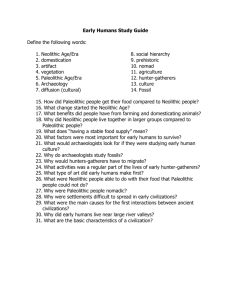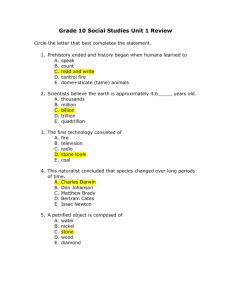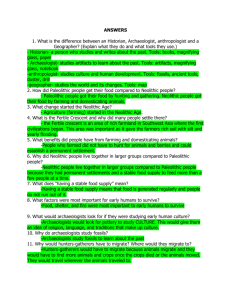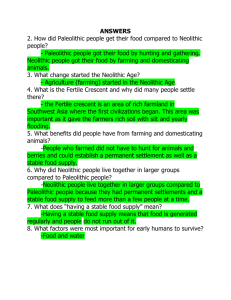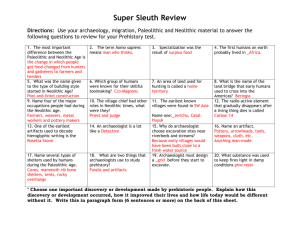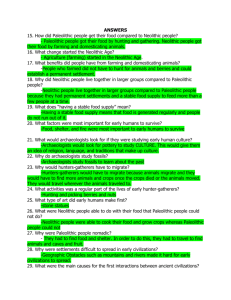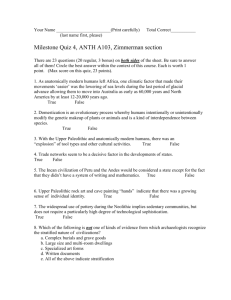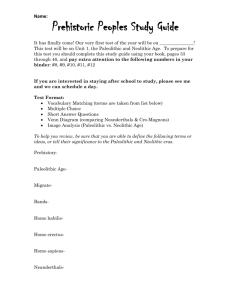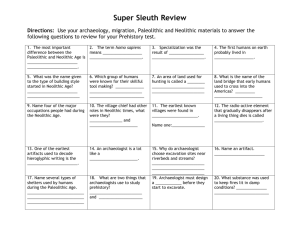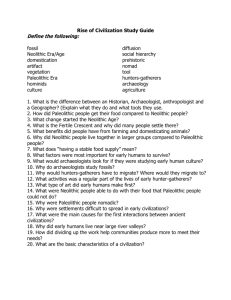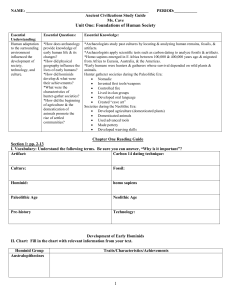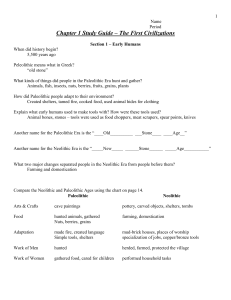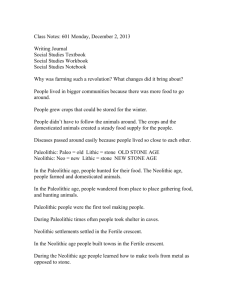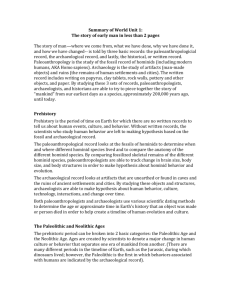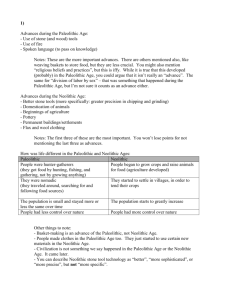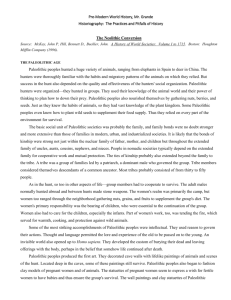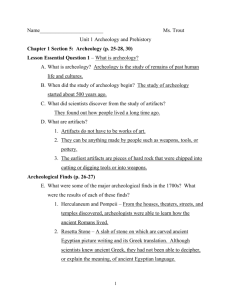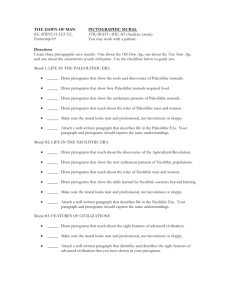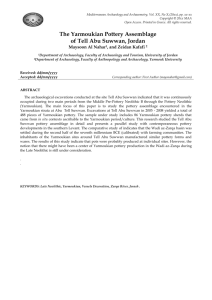Rise Study Guide with answers
advertisement
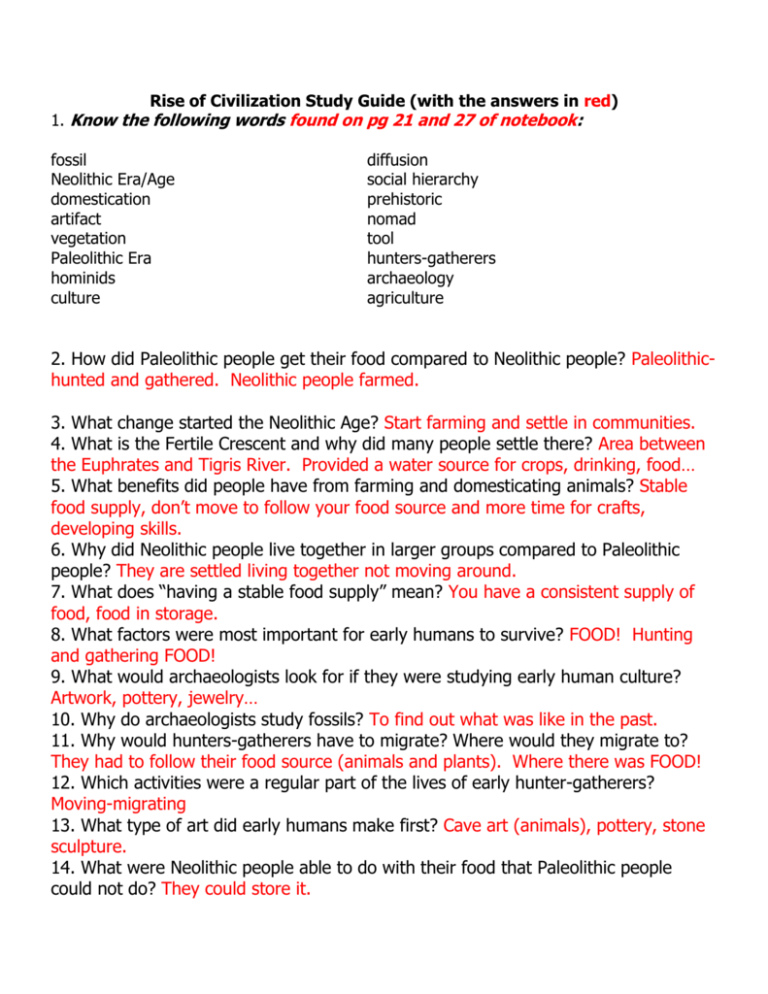
Rise of Civilization Study Guide (with the answers in red) 1. Know the following words found on pg 21 and 27 of notebook: fossil Neolithic Era/Age domestication artifact vegetation Paleolithic Era hominids culture diffusion social hierarchy prehistoric nomad tool hunters-gatherers archaeology agriculture 2. How did Paleolithic people get their food compared to Neolithic people? Paleolithichunted and gathered. Neolithic people farmed. 3. What change started the Neolithic Age? Start farming and settle in communities. 4. What is the Fertile Crescent and why did many people settle there? Area between the Euphrates and Tigris River. Provided a water source for crops, drinking, food… 5. What benefits did people have from farming and domesticating animals? Stable food supply, don’t move to follow your food source and more time for crafts, developing skills. 6. Why did Neolithic people live together in larger groups compared to Paleolithic people? They are settled living together not moving around. 7. What does “having a stable food supply” mean? You have a consistent supply of food, food in storage. 8. What factors were most important for early humans to survive? FOOD! Hunting and gathering FOOD! 9. What would archaeologists look for if they were studying early human culture? Artwork, pottery, jewelry… 10. Why do archaeologists study fossils? To find out what was like in the past. 11. Why would hunters-gatherers have to migrate? Where would they migrate to? They had to follow their food source (animals and plants). Where there was FOOD! 12. Which activities were a regular part of the lives of early hunter-gatherers? Moving-migrating 13. What type of art did early humans make first? Cave art (animals), pottery, stone sculpture. 14. What were Neolithic people able to do with their food that Paleolithic people could not do? They could store it. 15. Why were Paleolithic people nomadic? They were following their FOOD! 16. Why were settlements difficult to spread in early civilizations? Geographic obstacles (mountains, oceans, deserts) blocked cultural diffusion. 17. What were the main causes for the first interactions between ancient civilizations? Trading resources and warfare. 18. Why did early humans live near large river valleys? Water for drinking, crops, food sources, fertilize soil when they flood. 19. How did dividing up the work help communities produce more to meet their needs? People were able to finish jobs more quickly and focus on specific skills. 20. What are the basic characteristics of a civilization? Stable food supply, People doing specific jobs and Social Hierarchy.
